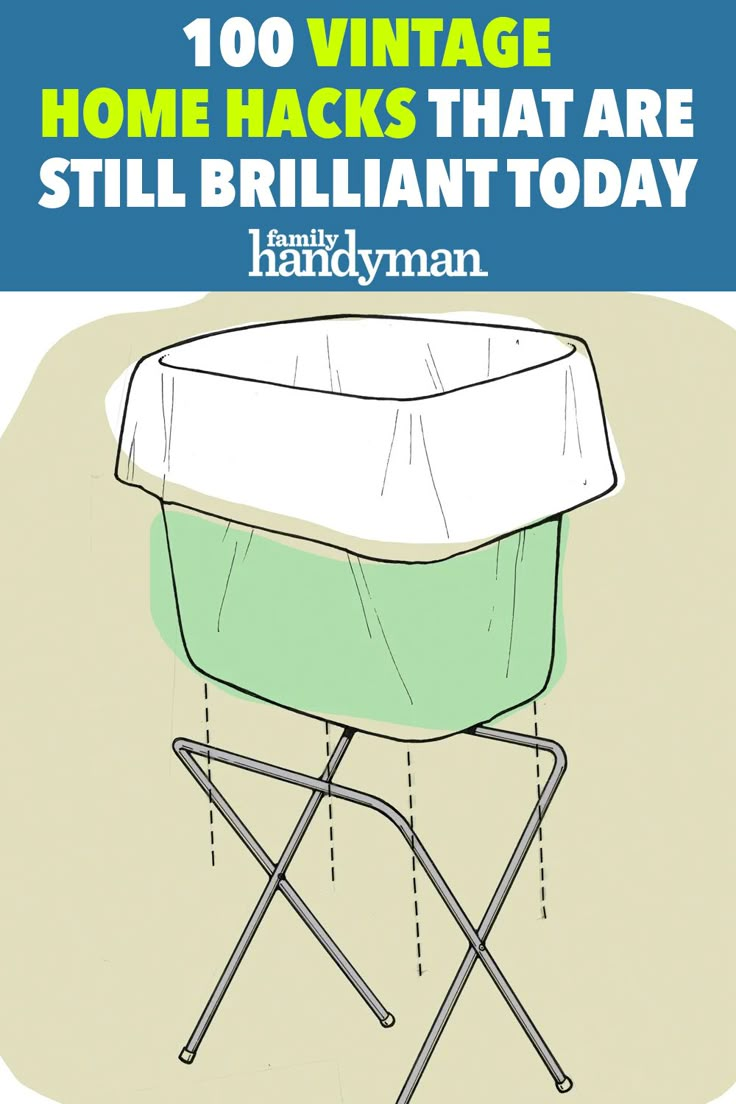ADVERTISEMENT
1 / 45
Old Caulk Remover
Need to remove that old caulk from your siding or from around your windows and doors? Nothing works better in my book than a hole-punch can opener. For better leverage, make a handle by cutting a slot in a 1-in. dowel. Then flatten the handle end of the opener in a vise, and secure it in the slot with a bolt and nut. — Fred Horlander
2 / 45
Family Handyman
Blade Life Extender
When the blade in your utility knife gets dull, it’s usually only the point and the first 1/4 in. or so that’s bad. You can get additional life from your blade by snapping off the point with a pliers (wear safety glasses). It won’t cut quite as well as a fresh, sharp blade, but a lot better than the dull one. — Dennis Feldpausch
3 / 45
Family Handyman
Wire Stick-Up
No more hammered thumbs, dropped and lost staples or broken wires: Use hot-melt glue to fasten low-voltage wire in place. Use it on phone lines, bell wire, garage door safety sensor wiring, outdoor low-voltage lights, or thermostat wiring. It makes a neat job, and the glue dabs can be painted to match the wall if necessary. (Note: This is for low-voltage lines only.) — Lloyd Ziegler
4 / 45
Family Handyman
Quieter Doors
Noisy, banging doors always annoyed me, until I discovered this easy fix: I stick three or four small self-adhesive felt pads— the kind used on cabinet doors—onto the door jamb stop molding. Besides quieting things down, they make the doors fit better. I also lubricate the latch with a dab of petroleum jelly, because it makes them work easier, further encouraging gentle closings. — Steve Bogumil
5 / 45
Family Handyman
Patio Paver Puller
Paver hacks are always a popular topic for our readers. This one is really handy for when you have some individual bricks or pavers in your sand-based patio may need re-leveling after a winter of freezing and thawing. How do you get the brick or paver out? Make these pullers from two pieces of coat-hanger wire. Slip the wires down both sides of the offending paver, turn them a quarter turn, and pull up the paver. For large patio blocks, make four pullers, and get a second person to help.
6 / 45
Family Handyman
No-Mess Drywall Sanding
Here’s a way to keep dust to a minimum when you have a lot of drywall compound to sand. Using duct tape, attach a standard swivel-head drywall pole sander to the rigid extension tube of your wet/dry shop vacuum. Keep the vacuum nozzle close to the sandpaper, and just below it. You’ll also need an extra length of hose for your vacuum to reach the ceiling and into corners. — Bruce Wallick
7 / 45
Family Handyman
Gutter Protector
Do you manage to cave in your gutters every time you lean a ladder against them? Try this: In the area or areas where you’ll place your ladder, drill two 3/16-inch holes, and drive two 7-inch galvanized spikes with 5-inch ferrules into the gutters behind where each leg will rest. The ferrules will support the ladder’s weight instead of the gutter. Most home centers sell standard gutter spikes and ferrules. — Randy Lucas
8 / 45
Family Handyman
Fence Post Holder
As a novice sinker of fence posts, I was having a heck of a time keeping the post plumb while pouring concrete into the hole. My Workmate workbench saved the day. Here’s the system: Simply position the workbench over the hole, clamp the post in place in the workbench, plumb it, then pour the concrete. By the time you have the next hole dug, the concrete will be firm enough to gently lift the workbench off the post. — Peter Gallagher
9 / 45
Family Handyman
Staple And Tack Puller Fulcrum
After removing carpeting and padding, I had a million tacks and staples to remove from my hardwood floors. To protect the floors, I tore strips of duct tape 3/4 inch wide and wrapped about 10 or 12 layers very tightly just above the base of the tack puller. This not only provided protection, but a bonus fulcrum that made pulling the tacks a breeze. I also filed a sharp edge on the tack puller to help get under tack heads and staples without damaging the floor. Be sure to wear safety glasses! — Vincet J. Santilli
SEE NEXT PAGE
ADVERTISEMENT
